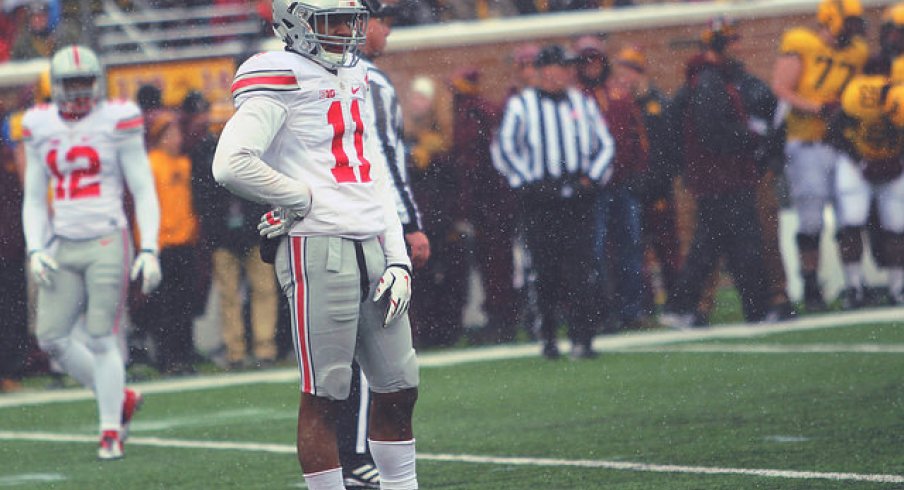Up 24-14 at the start of the fourth quarter in Minneapolis, Ohio State looked to land the finishing blow to a Gopher team that kept hanging around.
After Michael Thomas took advantage of broken coverage to catch a 30-yard touchdown pass, the Buckeyes appeared to have all the momentum in TCF Bank Stadium when Doran Grant picked off Mitch Leidner on the Gophers' ensuing possession.
But a quick three-and-out returned possession to the Gophers, keeping their hopes alive a little bit longer as they went into the final stanza down 24-14. Even though David Cobb would run for 147 yards and three touchdowns that afternoon, the Minnesota offense was forced to try and move the ball through the cold, sub-freezing air as they faced a critical third-and-six.
Knowing Leidner struggled to complete downfield passes from the pocket, the Gopher coaching staff looked to simplify his read on this occasion, bringing receiver KJ Maye (#1) in motion across the formation and putting three receivers to one side.
As they had for most of the second half, the Buckeyes were aligned in their base, Cover four shell with two deep safeties and both cornerbacks pressing the outside receivers on the line of scrimmage. But unlike their base package against spread formations that usually sees linebacker Darron Lee (#43) line up outside in the flat area, all three OSU linebackers had lined up between the tackles all afternoon in a "stack" look to help stop the inside running of Cobb.
But when Maye went in motion, middle linebacker Curtis Grant immediately recognizes that the Gophers are in a 3x1 formation, with the only threat to the weak side being a blocking tight end, and shifts the entire defense toward the strength of the formation.
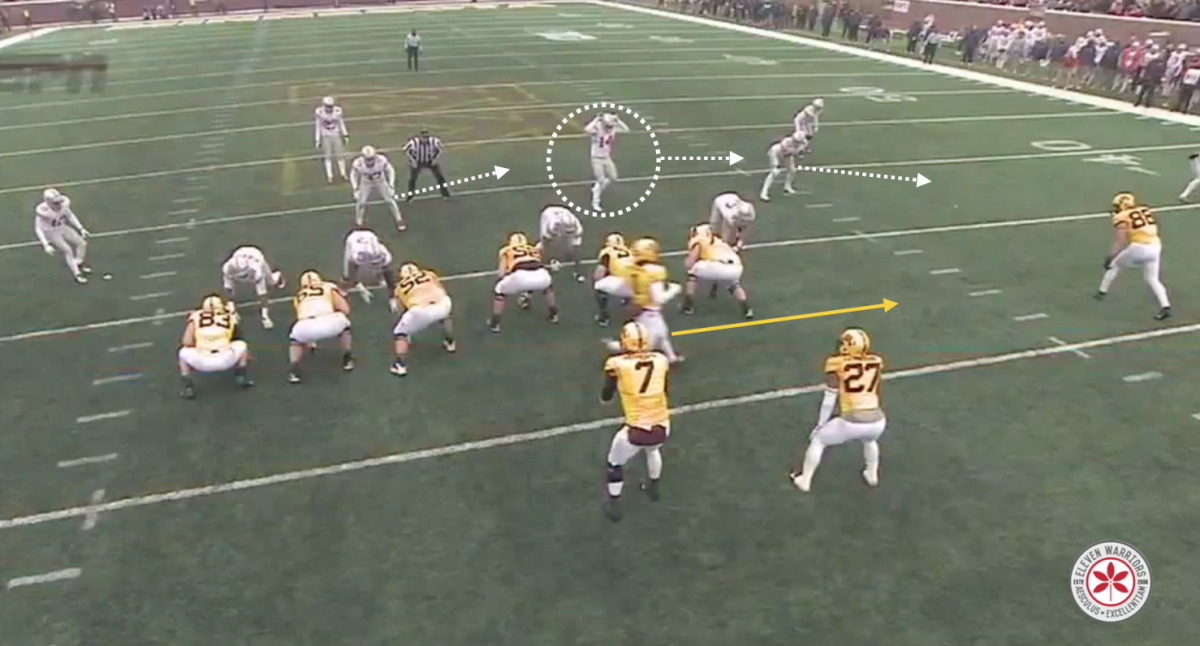
By overloading one side with three receivers, the Gophers looked to stretch the Buckeyes' cover four scheme. In that coverage, the receivers are numbered from the outside-in, and assigned to the defensive backs in that order if they release vertically downfield. In normal situations, that means the cornerback has the #1 vertical threat to the outside, and the safety has #2.
But in this instance, the Gophers have three vertical threats against two defensive backs to that side. To account, Grant's call not only bumps down the linebackers, putting Lee into his normal zone in the flat, but also bumps over the Buckeye secondary.
This adjustment is often referred to as a "push" call, placing pressure on three key defenders, the middle linebacker (Curtis Grant), the weak-side cornerback (Doran Grant), and most of all, the free safety (Tyvis Powell).
What the "push" call means is that the free safety will wait to see what the weak-side tight end and running back do before releasing to the strong side of the formation, and looking for the #3 deep threat to the inside (which was the motioned receiver, Maye, in this case). Effectively, Powell pushes over to that side after ensuring the offense isn't running some type of screen against only one defender on the weak side.
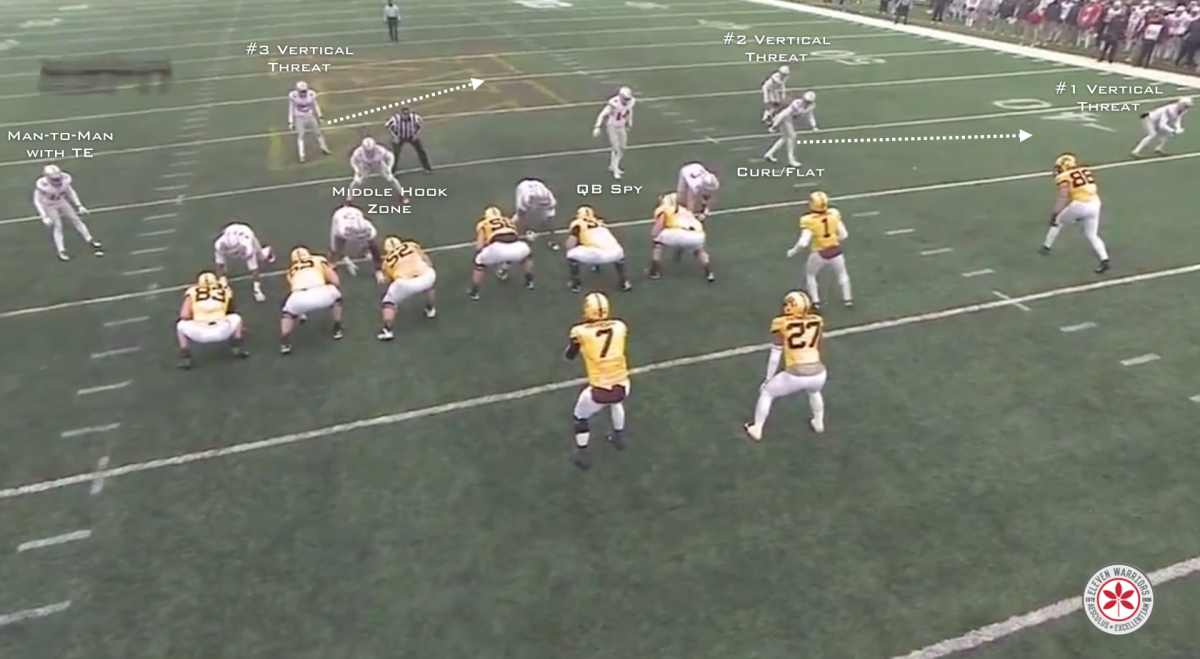
If only one player releases to the weak-side, Doran Grant would would take them on in man-to-man coverage, allowing Powell to flow to the action on the strong side. But to give time for Powell to make these reads, the middle linebacker, Curtis Grant, must jam Maye off the line of scrimmage, re-routing him inside towards Powell.
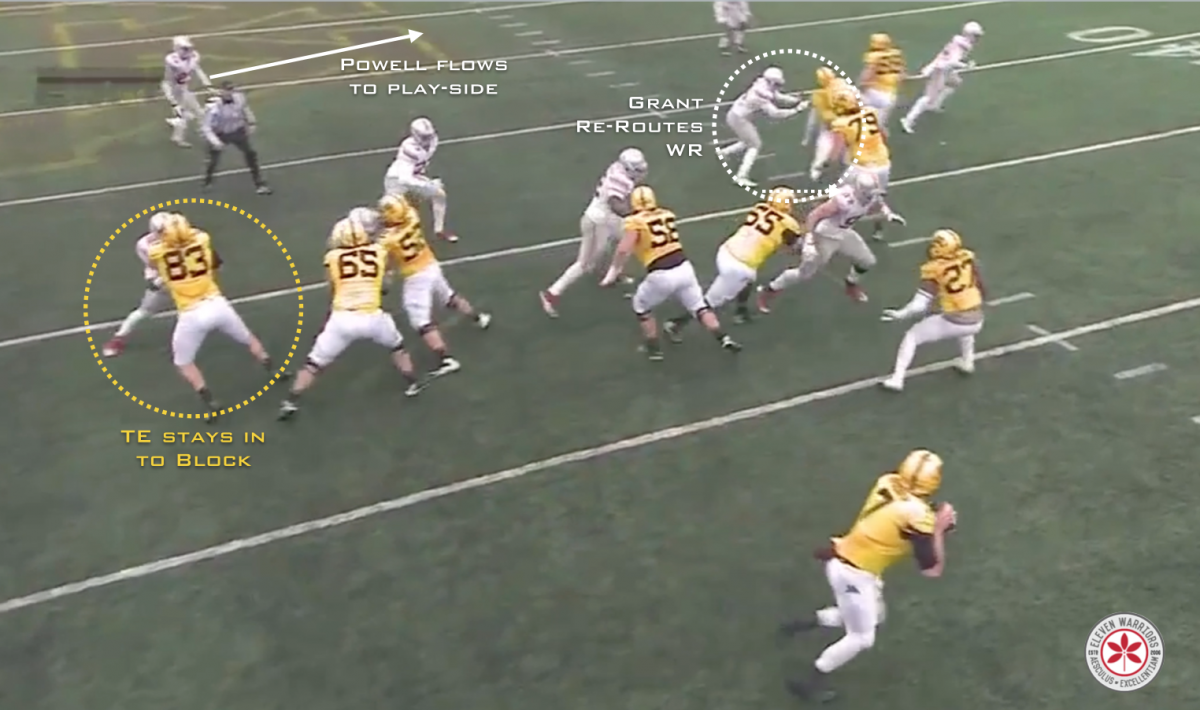
After seeing both the tight end and the running back stay in to block, Powell begins to push to the strength of the formation. However, he can't flow too fast, as he must be patient and see if Maye will run a deep crossing route to the inside. But Curtis Grant doesn't get a clean jam on Maye, allowing the quick wide-out to release quickly and to the outside.
As the play develops, it's clear that the Gophers are looking to attack with a familiar look for the Buckeyes, the sail concept. Theoretically, Leidner should have an easy, deep-to-short read with all three receivers stretching the Buckeye defense vertically.

As Leidner rolls out and looks to his number one read, the outside receiver running a "Go" route straight downfield, it's immediately clear that cornerback Eli Apple is blanketing his opponent and taking away that option.
Simultaneously, the strong safety, Vonn Bell, appears to be looking at Leidner's number three read, the shorter of two "Out" routes, while the two Buckeye linebackers, Grant and Lee, appear to be covering no one in their zones. It appears that no one is covering Maye at all.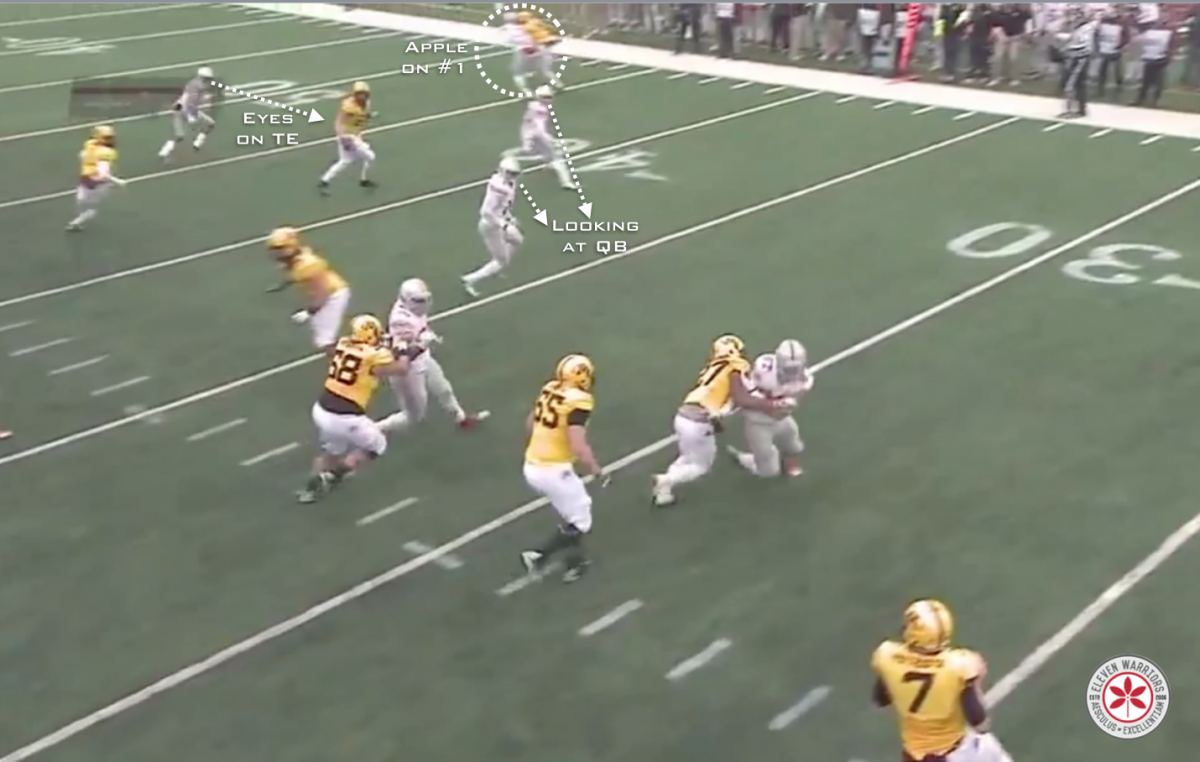
Thanks to the clean release granted to him off the line, Maye sits and finds what looks like a soft spot in the zone, splitting Powell and Bell.
But since the two out routes were so close to each other in depth, Bell had been splitting the two underneath routes, baiting Leidner into throwing the deep ball while knowing Lee would be there to help on the shorter throw.
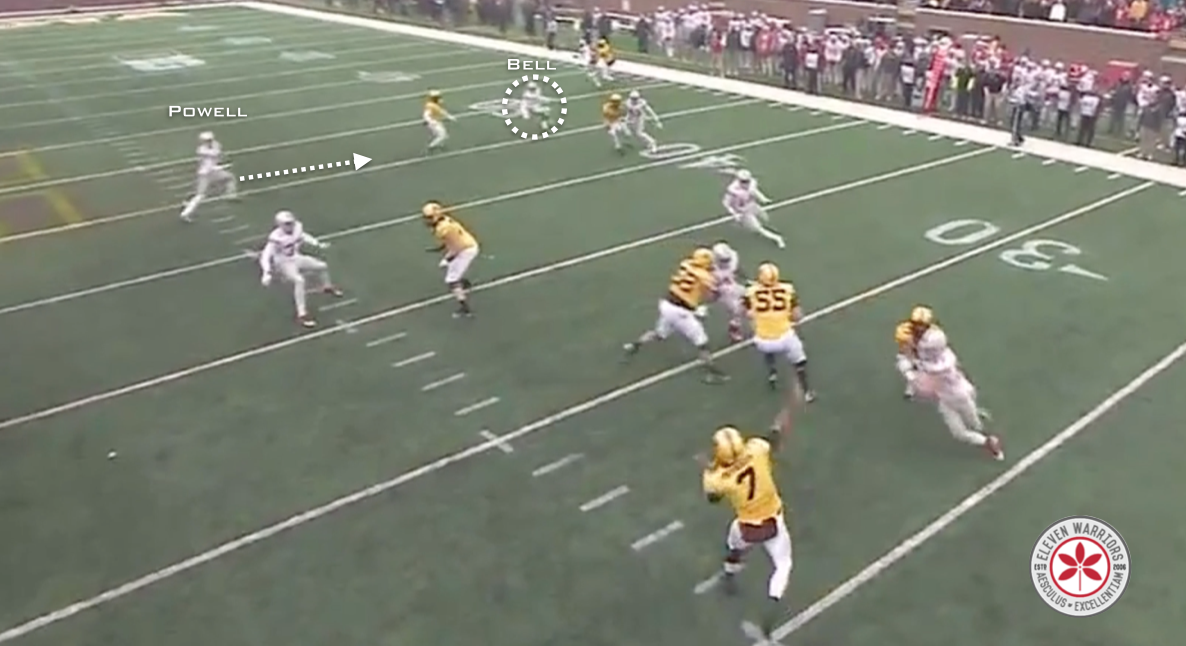
By the time Leidner sets his feet and releases the ball, Bell is able to break on the ball, jumping in front of the receiver to intercept the pass.
 Five plays later, J.T. Barrett would hit Evan Spencer for a 22-yard touchdown pass off a tunnel screen, giving the Buckeyes a 31-14 lead that would never be relinquished.
Five plays later, J.T. Barrett would hit Evan Spencer for a 22-yard touchdown pass off a tunnel screen, giving the Buckeyes a 31-14 lead that would never be relinquished.
On a day where few things went exactly as they should have, thanks in large part to the weather, the Buckeyes were able to make more big plays than the Gophers. Neither side was perfect, and there is little doubt that the coaching staffs on either side will have plenty of points to impress this week as result.
But when there are failures in scheme and execution, having players like Bell on the field that can make these kinds of plays are the difference between winning and losing.
